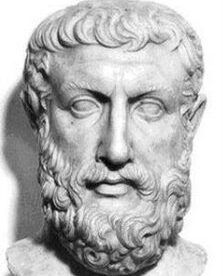
Available at St. Bonaventure Publications
Length of book: 108 pages
Of all the saints, he is certainly among the most well-known. Yet, as the author of this work laments, it is “a marvel that we know so little of one so great” (49), owing to the sad truth that the little of what has been handed down to us about this venerable man is not as commonly known as his fame would imply. In fact, I was of one those many Catholics who knew of St. Anthony, but would have been hard-pressed to give answers to someone curious about the details of his life.
This book has decisively transformed my ignorance into a truly rich knowledge, and with that knowledge, a greater love of St. Anthony. Stoddard impressively manages to relate the story of the Saint’s life, writing with incredible depth while maintaining the brevity of his work. Each chapter is carefully crafted and draws one in easily, contributing to the author’s presentation of not just the mere events, but the themes and virtues of the Saint’s life that come together to compose this wonderful painting of words. All of the great miracles that one hears mentioned about the man are given ample coverage, and the author supplements his style through the skillful inclusion of quotes from earlier histories of St. Anthony, and even from the Saint himself. Here are two particularly brilliant quotes:
The Sacred Heart is a fountain of supernatural life; a golden altar whereon is burning, night and day forever, incense that ascends in clouds of fragrance towards the skies and embalms the earth.
St. Anthony, as quot. on p. 71
Often, under the influence of his exhortations, penitents were moved to tears and convulsive sobs. To such he would say—to quote from his notes: “Poor sinner, why despair of thy salvation, since all here speaks of mercy and of love? Behold the two advocates who plead thy cause before the tribunal of Divine Justice: a Mother and a Redeemer—Mary, who presents to her Son her heart transfixed with the sword of sorrow; Jesus, who presents to His Father the wounds in His feet and hands, and His Heart pierced by the soldier’s lance. Take courage; with such a mediator, with such an intercessor, Divine Mercy can not reject thee.”
Who could resist this appeal, or fail to find strength or consolation in it?
(59)
Moreover, it is not only the miracles that took place during his life which are given coverage, but those which occurred after he was called to his reward by the One he once miraculously held in his arms. Thus, the reader comes away that much more informed that the tale of St. Anthony still continues in our time, in a more glorious way than when he had been on this earth.
It almost seems as if St. Anthony was given to us as another St. Joseph, for both men, despite the great respect and love shown to them by the Catholic world, remain almost as hidden to us as they were in their time in this world. Indeed, the mysteries which surround the annals of history regarding them seem almost another testimony to their love of recollection! Additionally, so numerous are the miracles attributed to St. Anthony that Stoddard does not hesitate to write that “one may call upon him in any strait” (98). Have we not also seen devotion to St. Joseph related in similar terms? Both men, it is to be noted, had the great privilege of carrying the Child Christ; both defended the Incarnation of Our Lord, one physically, and the other more through word, yet also by miracles, worked through him by the Almighty. St. Anthony, like St. Joseph, also defended the Virginity of the Blessed Mother, as one finds in this work, quoted by Stoddard, these sublime words of his:
The Virgin of Nazareth has, by a singular privilege, been preserved from the original stain and filled with a plentitude of grace. Hail, O Mother of God, city of refuge, sublime mountain, throne of the Most High, fruitful vine yielding golden grapes, flooding the hearts of men with the holy exaltation of pure love! Hail, Star of the Sea! Thy gentle and radiant light is our guide in the darkness, showing us the entrance to the harbor above. Woe to the pilot whose eyes are not fixed on thee! His frail bark will become the plaything of the storm, and will be swallowed up in the foaming billows.
(107)
Therefore, if the Catholic world wishes to “rediscover”, in a sense, devotion to St. Joseph, it would be well if we were to rediscover devotion to St. Anthony as well. This book presents an excellent means of doing so.
